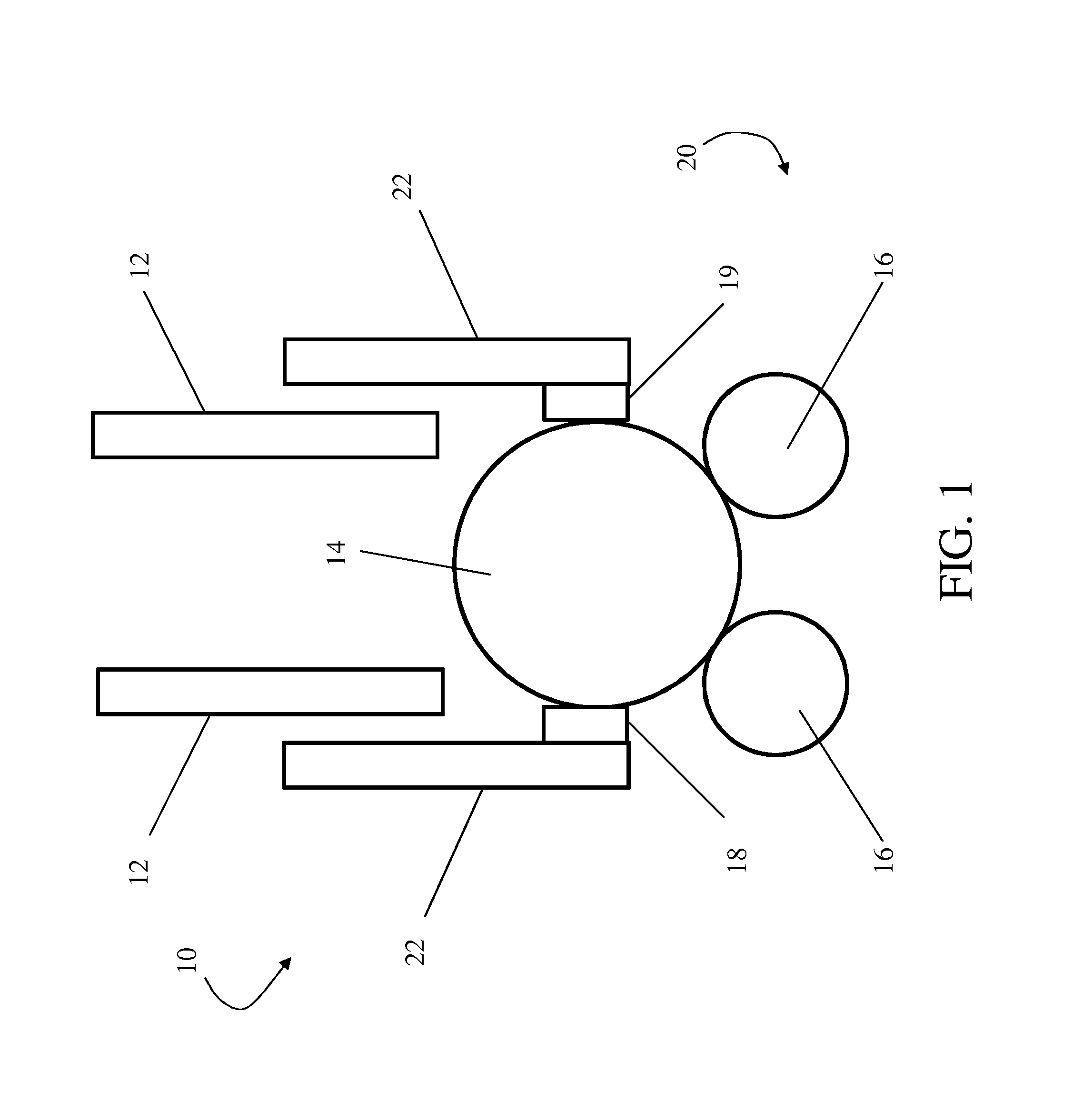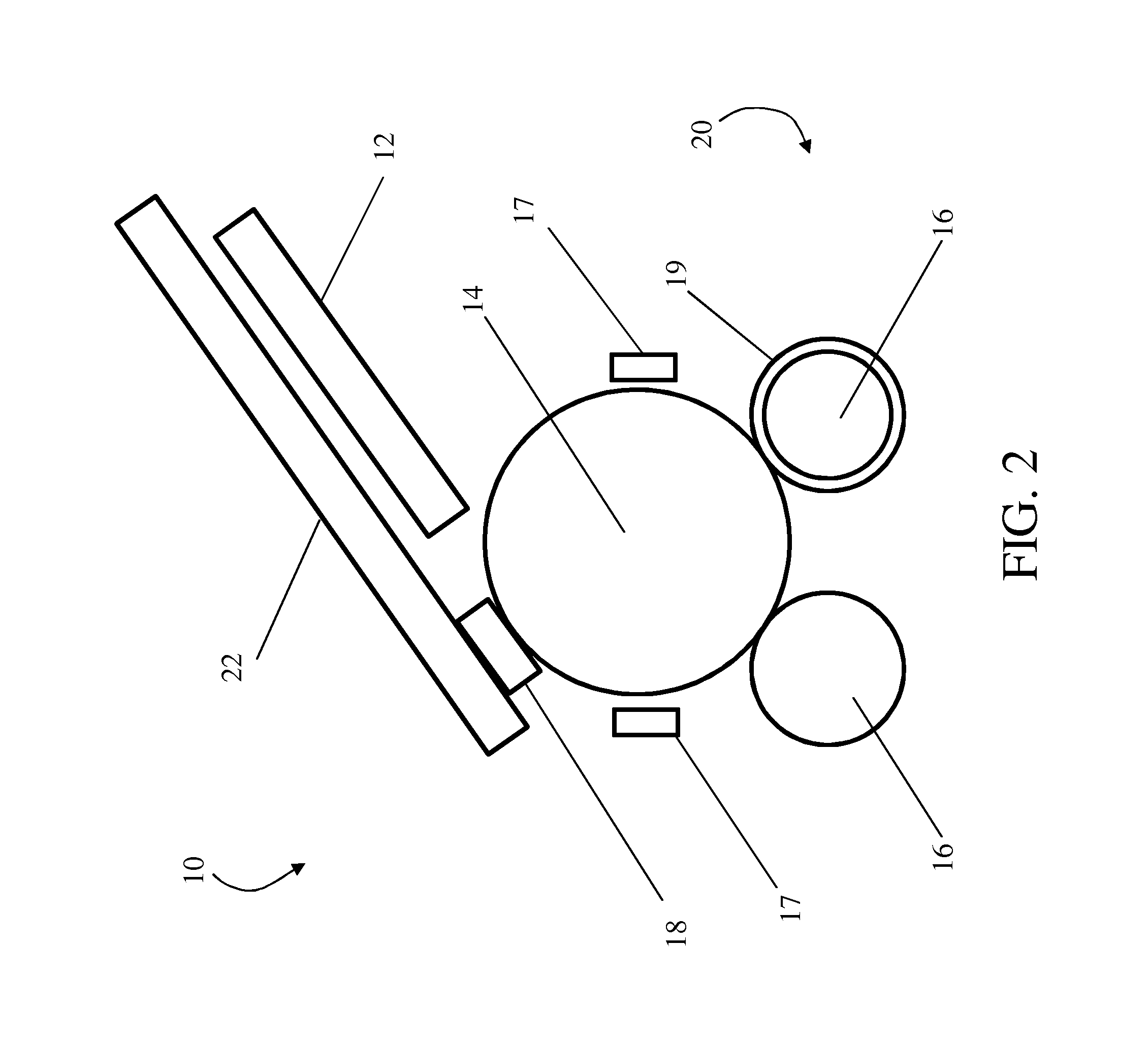Method and apparatus for pasteurizing shell eggs using radio frequency heating
a radio frequency heating and shell egg technology, applied in the field of pasteurizing shell eggs, can solve the problems of foodborne illness, high risk of bacteria in 30% of the us population, and high risk of foodborne illness, and achieve the effects of reducing the risk of foodborne illness
- Summary
- Abstract
- Description
- Claims
- Application Information
AI Technical Summary
Benefits of technology
Problems solved by technology
Method used
Image
Examples
example 1
[0034]An inoculated egg was placed on rollers (as shown in FIG. 1). The electrode brushes were placed in contact with the egg using the weighted arms. Using a motor connected to the rollers, the rotational speed of the rollers was adjusted to 15 RPM. Tepid (35° C.) water was directed between the egg and the electrode brushes. The purpose of the water was to improve the coupling of RF energy to the egg and to cool the egg shell and protect the albumen from overheating. Thus, the RF energy preferentially heated the yolk.
[0035]The electrodes were then connected via a coaxial cable to a RF power supply (ModCPS1000 / 60, Comdel, Gloucester, Mass.). The power supply produced up to 1 kilowatt at a frequency of 60 MHz and an output impedance of 50Ω. An impedance matching network was designed into the RF energy applicator's circuit to maintain 50Ω to ensure maximum coupling of energy from the power supply. The power supply included instrumentation that measured forward and reflected power. Bec...
example 2
[0039]For treatment with RF, an applicator electrode was attached to the large end of the egg and another to the small end. The electrodes consisted of copper mesh (woven wire cloth, wire diameter 0.028 cm, open area 67.9%) that was held in place with a retaining ring of zinc plated steel (for 4.1 cm shaft diameter).
[0040]A mesh was selected because the wire structure provided excellent electrical conductivity while the spaces between the wires allowed heat to freely transfer from the shell outwards, thus preventing any localized hot spots directly below the shell in the albumen. A clamp, made of high-strength electrical insulating material applied a slight force to the electrodes which resulted in good contact between the electrodes and the egg. The egg and applicator electrodes were then covered with 35° C. deionized water by placing them in a 2.5 l plastic-walled water bath. The water cools the egg shell and protects the albumen from overheating.
[0041]The experimental procedure c...
PUM
 Login to View More
Login to View More Abstract
Description
Claims
Application Information
 Login to View More
Login to View More - R&D
- Intellectual Property
- Life Sciences
- Materials
- Tech Scout
- Unparalleled Data Quality
- Higher Quality Content
- 60% Fewer Hallucinations
Browse by: Latest US Patents, China's latest patents, Technical Efficacy Thesaurus, Application Domain, Technology Topic, Popular Technical Reports.
© 2025 PatSnap. All rights reserved.Legal|Privacy policy|Modern Slavery Act Transparency Statement|Sitemap|About US| Contact US: help@patsnap.com



